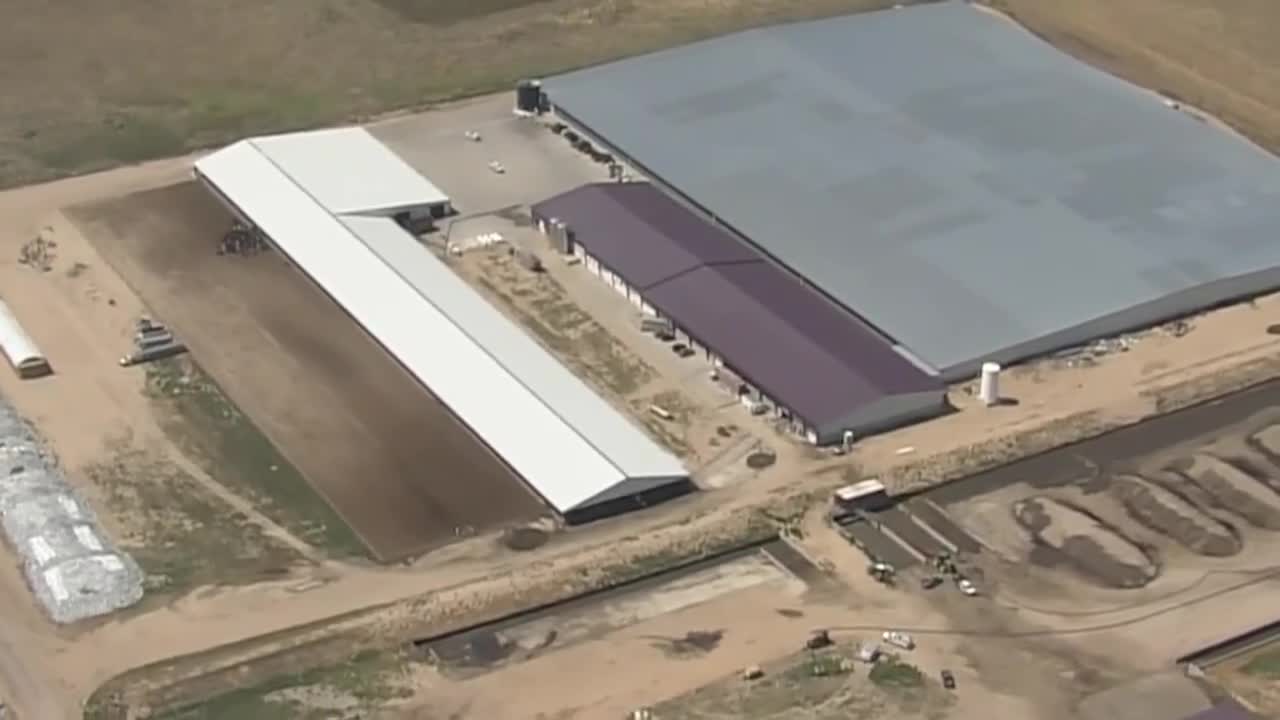KEENESBURG, Colo. — An accident Wednesday evening at Prospect Valley Dairy in Keenesburg led to the deaths of six people in a "confined space," including a local high school student.
The Weld County Coroner's Office released their identities Friday evening. The victims are all male, and their ages range from 17 to 50.
Dispatch calls during the incident indicated gas masks may be necessary during the rescue effort. In a statement to Denver7, the Weld County Coroner’s Office said the deaths were being investigated as a possible gas exposure but that an autopsy would determine an official cause of death.
The Occupational Safety and Health Administration (OSHA) is investigating the incident.

Weld County
These are victims of the deadly Colorado dairy accident in Keenesburg
Instructors like Dale Robinson help Coloradans understand the many workplace safety regulations set by OSHA.
A national network of nonprofits, authorized by OSHA, provides occupational safety and health training for employers and employees. The Construction Education Foundation’s OSHA Education Center serves Colorado and five other Mountain West states.
“We have hundreds of people come to our institute,” Robinson explained. “We just don't focus on courses and training for the construction industry. We capture training programs for general industry, patrol, ministry, medical, automotive, construction.”
“We teach people how not to die at work,” Robinson continued. “But can we guarantee that? No. It has to go back to personal responsibility, employer responsibility, and the people knowing the hazards they’re exposed to.”
“We help both employers and employees and understand what it is that they need to be looking for, what reports and documents they need to ensure that employees go home safe,” said Lavan Konshak, the OSHA Education Center’s program director.
Denver7 is digging into OSHA's definition of a “confined space.”
The regulatory agency defines a confined space as one that:
- Is large enough for a worker to enter and complete a task in,
- Has limited or restricted means of entry or exit, and
- Is not designed for continuous human occupancy.
Robinson clarified, however, that not all confined spaces are considered the same. He said those with hazards, such as an environment with too much or too little oxygen, or a certain level of exposure to flammable or toxic gases, are "permit-required" and need extra training.
"That's why OSHA has a specific proficient level training for employees going in, but also requirements for having a written program for a confined space entry, a permit... training for the entrants going in, attendant, entry supervisor, and proficient level for rescue," he explained. "It's a critical task in the industry."

Weld County
Dairy worker may have accidentally released toxic gas in incident that killed 6
Robinson notes he and others from the OSHA Education Center cannot speak to the details surrounding this week's tragedy and are not involved in the investigation, but they advocate for employers and employees to get trained on what the federal safety regulations are, and for employees to know their workplace safety rights.
"The Hispanic community is a vulnerable community," said Ale Spray, president of Hispanic Contractors of Colorado and board chair of the Construction Education Foundation. "Sometimes the language barrier, sometimes they are afraid to ask for the rights of being offered a safe space and equipment to perform their jobs adequately... We don't want those to continue to be a number; we want people to go home."
Unfortunately, workplace deaths involving any "confined space" are not that uncommon. The Bureau of Labor Statistics reported roughly 128 such deaths each month, on average, between 2011 and 2018. When it comes to hydrogen sulfide poisoning, which Denver7 sources expect as the cause of death in this incident, the bureau reports only about six deaths each year, on average, during a seven-year span.
OSHA has a lengthy list of possible confined spaces in agriculture, several of which could also involve gas exposure:
- Grain and feed storage facilities
- Corrugated steel bins
- Silos
- Sumps, tunnels, and pump pits
- Dump pits
- Forage storage
- Manure storage tanks
- Manure/bio-digester units
- Manure transport vehicles (tanks and applicators)
- Bulk transport vehicles
- Sprayer and chemical transport vehicles
- Forage and silage dump wagons
- Feed grinders/mixers
- Feed mixer wagons/tanks
- Storage and mixing tanks, bins, and silos
- Fermentation vessels
- Environmentally controlled fruit and vegetable storage units
- Bulk liquid storage tanks
- Containment areas around diked storage tanks
- Wells, cisterns, dry wells, septic tanks
- Grain driers
- Fuel storage tanks






